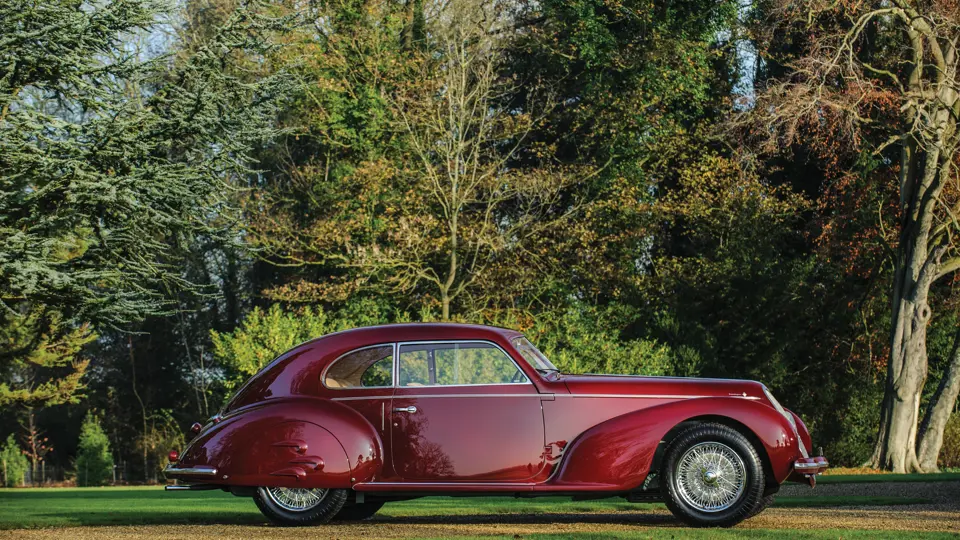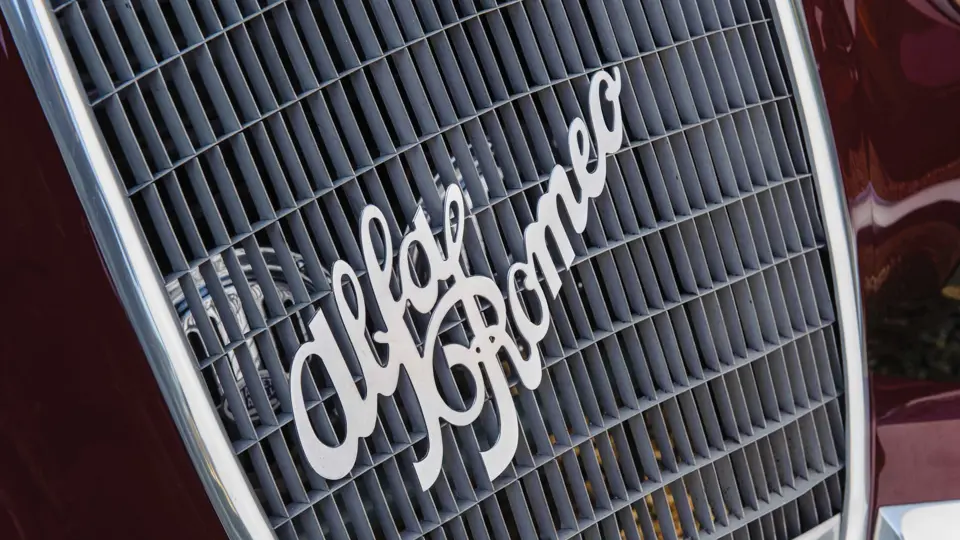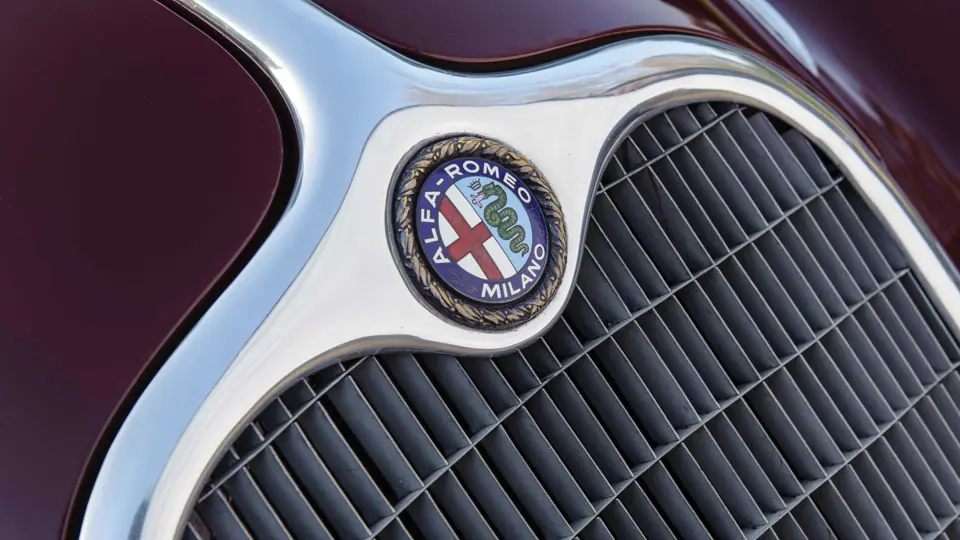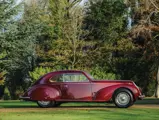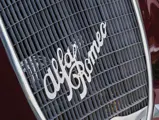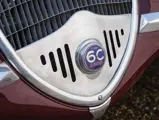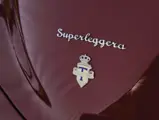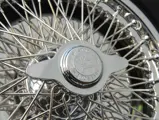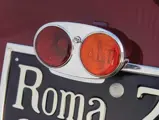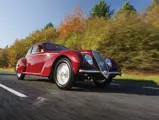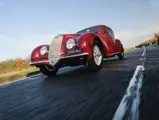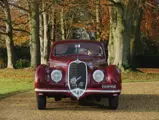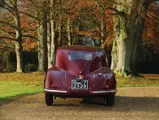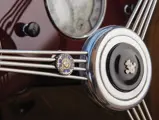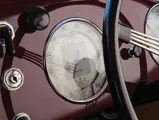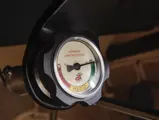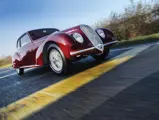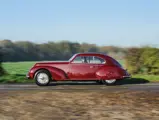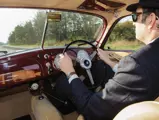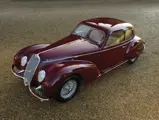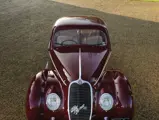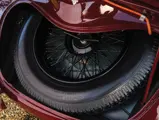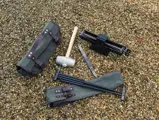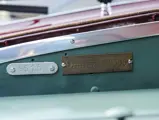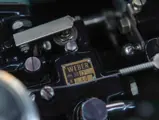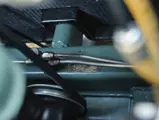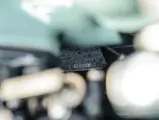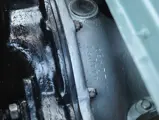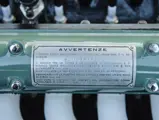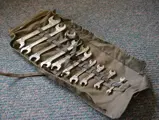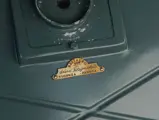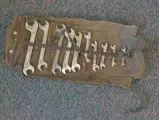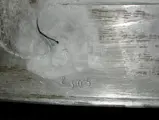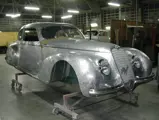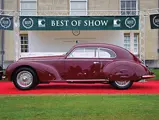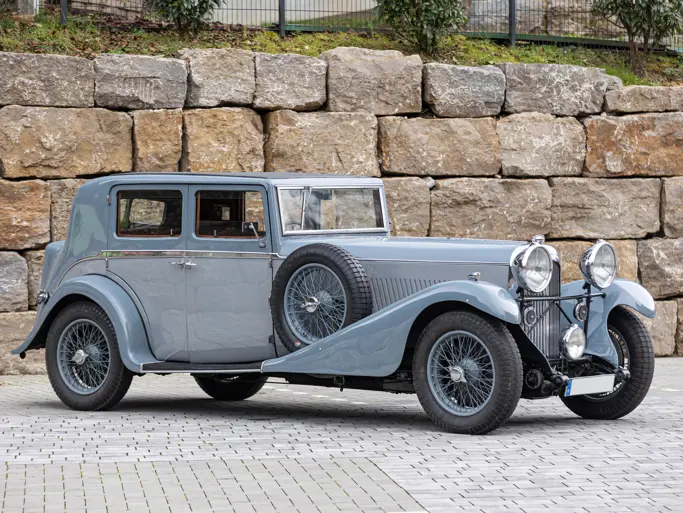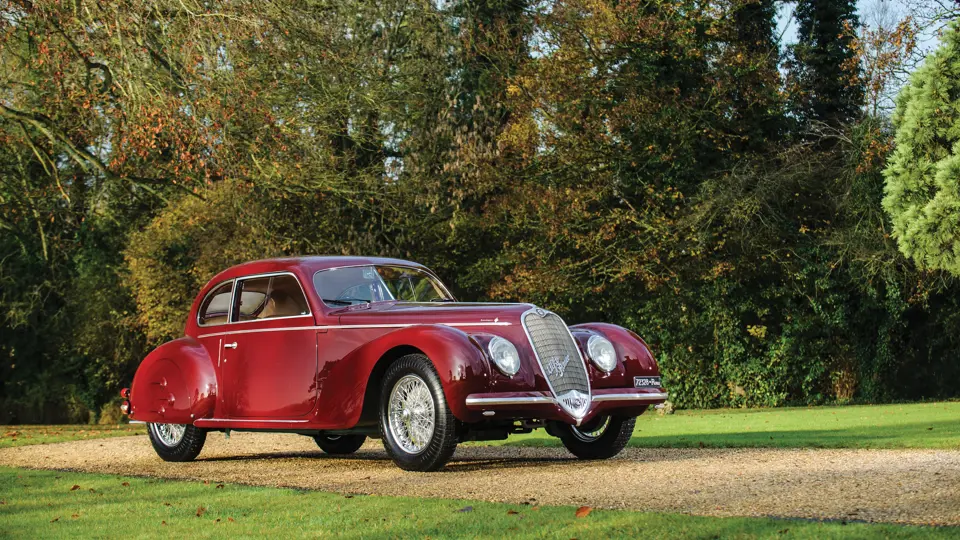
1939 Alfa Romeo 6C2500 Sport Berlinetta by Touring
{{lr.item.text}}
€1,900,000 - €2,400,000 EUR | Not Sold
{{bidding.lot.reserveStatusFormatted}}
- Known as the “Mussolini Mistress” car
- Original chassis, engine, and body
- Engine-upgraded to triple-carburettor Super Sport configuration
- Outstanding restoration by Garage Bonfanti
- Numerous awards, including a 2011 Salon Prive Best of Show
- Properly sorted and lovely to drive
- Connue comme la voiture de la « maîtresse de Mussolini »
- Châssis, moteur et carrosserie d'origine
- Moteur amélioré à aux spécifications Super Sport à trois carburateurs
- Superbe restauration par le Garage Bonfanti
- Nombreuses récompenses dont le Best of Show de Salon Prive 2011
- Bien réglée et agréable à conduire
110 hp, 2,443 cc dual overhead-camshaft inline six-cylinder engine with triple Weber 36DO2 carburettors, four-speed manual synchromesh transmission, independent front suspension with coil springs, independent rear suspension with swing axles and torsion bars, and four-wheel drum brakes. Wheelbase: 3,000 mm.
Moteur six-cylindres en ligne, 2 443 cm3, 110 ch, 2 ACT, trois carburateurs Weber 36DO2, boîte manuelle quatre rapports synchronisés, suspension avant indépendante avec ressorts hélicoïdaux, suspension arrière indépendante avec demi-essieux oscillants et barres de torsion, freins à tambour sur les quatre roues. Empattement: 3 000 mm
BEFORE THE STORM: CHASSIS NUMBER 915.033
This Alfa Romeo 6C2500 Sport, chassis number 915.033, was produced in 1939 and, at the time, was clothed in exceptionally handsome lightweight berlinetta coachwork made of aluminium by Carrozzeria Touring, of Milan, body number 2305. Records indicate that a mere 16 Touring berlinettas were produced, with an unknown number of survivors.
Whilst the standard 6C2500 Sport was equipped with a 95-horsepower engine, it became common practice later in production to have the factory upgrade the engine to the competition-bred Super Sport configuration, which resulted in a useful increase in horsepower to 110 brake horsepower. According to noted historian and Alfa Romeo specialist John de Boer: “It would appear that the commercialised ‘Super Sport’ configuration was considered to be a modification to the engine…and that there was a ‘kit’ number for the conversion. It seems that a plate was attached to the firewall or right-side inner wing panel for cars that were fitted by Alfa Romeo or possibly their dealers with the ‘Super Sport’ conversion”.
On this car, the engine is the original, number 923.685, and it does, indeed, bear a plate attached to the firewall, number SS15, which fits neatly into the sequence that was established by Mr de Boer during his decades of research.
Italian Fascist dictator Benito Mussolini once gifted a beautiful Alfa Romeo to his favoured mistress, Claretta Petacci, and this is that car.
FAST FORWARD: THE FINAL DAYS
In April 1945, with the war in Europe in its final days, Claretta Petacci, her brother, Marcelo, and his family left the Italian town of Salo to rendezvous with Mussolini and his last small band of supporters, who were plotting their escape. They headed north via Milan, travelling on the western shore of Lake Como, and were escorted by only a small procession of four or five cars, including Signora Petacci’s Alfa. Along the way, the group was joined by a heavily armed German anti-aircraft unit, which was also fleeing the advancing Allied forces.
Most accounts report that Mussolini’s getaway plan was to seek asylum in Switzerland. The Alfa Romeo was disguised with Spanish diplomatic license plates and legation flags and was driven by Marcello Petacci, who posed as the Spanish ambassador to Italy.
The motorcade proceeded north until it was stopped at a partisan roadblock near the town of Dongo on 27 April 1945. Although they heavily outgunned the small partisan force, the Germans were in no mood for a fight by this stage of the war. After lengthy negotiations, the partisans finally agreed to let the convoy pass, provided that the Germans would allow the vehicles to be inspected for Italian Fascists.
Before proceeding, the most prominent Fascist of them all, Mussolini, donned the uniform of a German corporal and climbed aboard one of the German vehicles. Unfortunately for the dictator, the disguise proved unconvincing, and he was quickly identified at the checkpoint. All of the Italians in the convoy were arrested, and during the ensuing interrogations, the true identities of the “Spanish ambassador” and his “sister” were established.
Mussolini and his mistress were taken back south towards Como, to a remote partisan hideaway in Mezzegra. After reportedly spending their only full night together after 13 years of romance, they were executed, with their bodies infamously put on display in Milan.
Signora Petacci’s Alfa Romeo was confiscated by the Italian authorities and moved to Livorno. Around 1946, it was acquired by an American Army Air Corps officer, Major Charles Pettit. Pettit drove the Alfa in Italy whilst based at Camp Darby near Livorno, and in 1949, he shipped it back to his family’s farm in New York State, where he drove it for several years before a connecting rod failed. The car then sat dormant on the farm for many years; that is until it was acquired in 1967 by Pettit’s uncle, Albert Harris, who partially dismantled it in anticipation of a restoration that never proceeded.
In 1970, a Hemmings Motor News advertisement for the car was brought to the attention of Ron Keno, of Mohawk, New York, by one of his high-school students. Keno, a respected dealer of antique furniture when not teaching, purchased the Alfa over the phone for $300. Several photos depict the car as-found and being loaded onto a trailer virtually complete, even wearing the rear spats with their unusual, believed-unique scalloped ornamentation. Whilst the car was being secured, Harris made mention of an incredible story—a story of the car originally being the property of Mussolini’s mistress.
After three years of owning the Alfa Romeo and puzzling over Mr Harris’s claim, Keno wrote a letter to Mussolini historian Richard Collier, who referred him to Herr Franz Spögler. Spögler was a former SS Obersturmführer who had been assigned as Petacci’s chauffeur and bodyguard after the deposed Mussolini was reinstated as a puppet dictator by Hitler in September 1943. Due to his proximity to both Mussolini and Petacci during the last years of the war, Spögler had proven an invaluable first-person witness to Collier and other biographers, and he was in a unique position to elaborate upon the Alfa Romeo’s history.
Spögler responded to a letter from Keno with interest, and he eventually endeavoured to meet the Alfa Romeo’s owner whilst visiting the U.S. in November 1975. Keno eagerly took the former custodian to the garage to see the car, with Spögler reportedly recalling details of its design even before the garage door had been opened. Indeed, he recognised many details of Keno’s car, with one particular item proving that it was the same one he had driven so many years earlier: a German-made tool roll, which had been given to Spögler by soldiers who had assisted him after he and Claretta had broken down in the car.
The visit attracted local attention and was captured in an article published in the local newspaper. Keno’s subsequent visit to see Spögler, in the Italian Alps where his family ran a hotel, is detailed in several issues of the Alfa Romeo 6C2500 Register, which were published in 1977 and 1978.
MODERN TIMES
In late 1978 or early 1979, the partially restored Alfa Romeo was sold by Keno to collector Donnie Morton, of Connecticut, who ultimately passed it to the Imperial Palace Auto Collection. The collection performed a cosmetic restoration and displayed it as part of their vast holdings of rare and coachbuilt automobiles for the next two decades, until it was sold to another long-term owner in 1999.
The new owner had the car’s engine rebuilt in Italy, with parts sourced from renowned Alfa Romeo preservationist-restorer and master mechanic Francesco Bonfanti, and this prepared the car for entry into the Mille Miglia Storica in 2001 and 2002. Afterwards, at Bonfanti’s advice, the owner undertook a two-year, €500,000 restoration at Garage Bonfanti, who collaborated with body specialist Dino Cognolato. During the restoration, which was meticulously documented by dozens of photographs, the team was often visited by Carlo Anderloni, the son of Carrrozzeria Touring’s founder, Felice Anderloni, who had access to the original drawings, which were required to authentically recreate missing sections of the floorpan and door sills. Going to great lengths to ensure authenticity, Bonfanti preserved as much of the original metal as possible, estimating that it is 85–90% pure in that regard, with the carrozzeria’s hammer marks remaining visible under the aluminium bonnet. In addition, authentic, beguiling details abound. For example, various dashboard switches were recreated from scratch. Even the delicate Carrozzeria Touring logo, which had been etched into the glass of the rear-view mirror, and the 1939 tax disc on the steering wheel are genuine.
An RM specialist who recently had the pleasure of driving chassis number 915.033 was exuberant in his praise: “I had a decent amount of time behind the wheel, and the drive was absolutely lovely! The engine is very flexible at different revs, pulling away smoothly at 1,500 rpm in fourth gear. The suspension filters the feel of the road very well, and the brakes are efficient; even the gauges are all operational. It is so light to drive; it lives up to its Superleggera name”.
When shown on the concours field, chassis number 915.033 won its class at the 2007 Concorso d’Eleganza Villa d’Este and Best of Show honours at Salon Prive in 2011, after which it was the subject of a major feature article in Classic and Sportscar magazine, adding further notoriety to the car. The superb artisanship of its masterful restorers is undiminished.
The car is offered today with a history file, which includes correspondence between Collier, Keno, and Spögler, as well as copies of the Alfa Romeo 6C2500 Register, in which Herr Spögler’s verification of its history as “the Petacci getaway car” is documented. Most importantly, the car is accompanied by the storied German tool roll, which had been reunited with the Alfa Romeo most recently, courtesy of Ron Keno.
Whilst there is a growing movement amongst aficionados to compare beautiful automobiles to fine art, the understanding of certain automobiles as invaluable historical objects is still in its infancy. Some travel through time to the present day with their chronicles undocumented. Others are fortunate to survive, whilst being inextricably linked to a specific time and place in the history of the world. This 1939 Alfa Romeo 6C2500 Sport Berlinetta displays timeless beauty, impressive rarity, and outstanding performance, and it is the living embodiment of its fascinating history.
AVANT LA TEMPETE : CHASSIS N° 915.033
Cette Alfa Romeo 6C2500 Sport, châssis n° 915.033, est sortie d'usine en 1939, habillée de cette carrosserie Berlinetta extraordinairement élégante, réalisée en aluminium par la Carrozzeria Touring, de Milan, avec le numéro de carrosserie 2305. D'après les archives, seuls 16 exemplaire ont été produits, dont le nombre de survivantes n'est pas connu.
La 6C2500 Sport standard était équipée d'un moteur 95 ch, mais il était courant de faire par la suite modifier la voiture à l'usine, pour que le moteur bénéficie des spécifications Super Sport, permettant à la puissance de passer à 110 ch. D'après John de Boer, historien et spécialiste de la marque, « Il est apparu que la configuration commercialisée sous le nom ‘Super Sport’ était considérée comme une modification du moteur...et qu'il existait un ‘kit’ de conversion. Il semble qu'une plaque ait été fixée sur l'auvent ou à l'intérieur de l'aile côté droit, sur les voitures qui étaient équipées par Alfa Romeo, voire par leurs distributeurs, de cette conversion ‘Super Sport’ ».
Sur cette voiture, le moteur (n° 923.685) est d'origine, et une plaque est en effet fixée sur l'auvent, portant le numéro SS15, ce qui s'intègre parfaitement dans la séquence établie par M. de Boer au cours de ses longues années de recherche.
Le dictateur italien fasciste Benito Mussolini avait fait cadeau d'une superbe Alfa Romeo à sa maîtresse Claretta Petacci. C'est la présente automobile.
PLUS TARD : LES DERNIERS JOURS
En avril 1945, la guerre en Europe connaissant ses derniers jours, Claretta Petacci, son frère Marcelo et sa famille ont quitté la ville italienne de Salo pour retrouver Mussolini et son dernier cercle de fidèles, de façon à organiser leur fuite. Escortée d'un petit groupe de quatre ou cinq voitures, l'Alfa Romeo de Claretta Petacci prenait la direction du nord via Milan, longeant la rive ouest du lac de Côme. Sur la route, le groupe était rejoint par une unité anti-aérienne allemande lourdement armée, qui fuyait elle aussi les forces alliées.
La plupart des récits indiquent que le plan de Mussolini était de chercher refuge en Suisse. Dissimulée derrière des plaques diplomatiques espagnoles, et portant les drapeaux correspondant, l'Alfa Romeo était conduite par Marcello Petacci jouant le rôle de l'ambassadeur d'Espagne en Italie.
Le convoi continuait vers le nord jusqu'à ce qu'il soit arrêté par un barrage de partisans, près de la ville de Dongo, le 27 avril 1945. Malgré leur armement supérieur, les Allemands ne tenaient guère à engager le combat à ce stade de la guerre. Après de longues négociations, les partisans acceptaient de les laisser passer, à condition de pouvoir inspecter les véhicules et vérifier la présence de fascistes italiens.
Avant d'entrer, le plus important des fascistes présents, Mussolini, enfilait l'uniforme d'un caporal allemand et montait à bord d'un des véhicules allemands. Malheureusement pour lui, le déguisement n'était guère convaincant et il était rapidement identifié lors du passage au contrôle. Tous les Italiens présents dans le convoi étaient alors arrêtées et, au cours des interrogatoires qui ont suivi, la véritable identité de « l'ambassadeur d'Espagne » et de sa « sœur » a pu être établie.
Mussolini et sa maîtresse étaient ramenés au sud vers Côme, jusqu'à un poste de partisans établi à Mezzegra. Après avoir passé, dit-on, leur seule nuit complète ensemble après 13 ans d'aventure sentimentale, ils étaient exécutés, leurs corps étant exposés à Milan.
L'Alfa Romeo de la Signora Petacci était confisquée par les autorités italiennes et emmenée à Livorno. Vers 1946, un officier de l'armée de l'air américaine, Major Charles Pettit, en faisait l'acquisition. Il utilisait alors l'Alfa Romeo pendant son affectation au Camp Darby, près de Livorno, avant de l'exporter, en 1949, aux États-Unis dans la ferme familiale située dans l'État de New York. Il roulait avec l'Alfa Romeo régulièrement jusqu'à ce qu'une bielle se casse, et la laissait alors inutilisée pendant plusieurs années. Il la cédait ensuite à son oncle, Albert Harris, qui commençait à la démonter dans le but d'une restauration, mais sans aller plus loin.
En 1970, une petite annonce du Hemmings Motor News concernant cette voiture était montrée à Ron Keno, de Mohawk, New York, par un de ses élèves. Pratiquant une activité d'antiquaire lorsqu'il n'enseignait pas, Keno achetait l'Alfa Romeo au téléphone, pour la somme de 300 $. Plusieurs photos montrent la voiture telle qu'elle a été trouvée, puis chargée sur une remorque, pratiquement complète, y compris les carénages de roues arrière avec leur ornementation spécifique et vraisemblablement unique, composée de trois « coquilles ». Pendant le chargement de la voiture, Harris mentionnait cette histoire incroyable—que cette voiture avait appartenu à l'origine à la maîtresse de Mussolini.
Trois ans plus tard, troublé par l'affirmation de Harris, Keno écrivait à l'historien spécialiste de Mussolini, Richard Collier, qui l'orientait vers M. Franz Spögler. Spögler était un ancien SS Obersturmführer, qui avait été affecté comme chauffeur et garde du corps de Claretta Petacci, après que Mussolini, destitué, ait été remis en poste en septembre 1943 par Hitler, comme dictateur fantoche. Grâce à sa proximité avec Mussolini et Petacci pendant les dernières années de la guerre, Spögler s'était révélé un témoin précieux pour Collier et d'autres biographes, et il occupait une position unique pour pouvoir évoquer l'histoire de l'Alfa Romeo.
Spögler répondait avec intérêt à une lettre de Keno, et proposait finalement de rencontrer le propriétaire de l'Alfa Romeo lors d'un voyage aux États-Unis, en novembre 1975. Keno emmenait alors l'ancien chauffeur dans le garage où était garée la voiture ; avant même que la porte ne s'ouvre, Spögler évoquait déjà des détails de fabrication propres à cette Alfa Romeo. Et il reconnaissait en effet de nombreuses particularités de la voiture de Keno, dont un élément spécifique prouvant qu'il avait bien devant lui la voiture qu'il avait conduite de nombreuses années auparavant : une trousse à outils allemande, donnée à Spögler par des soldats qui l'avait aidé après qu'il soit tombé en panne avec Claretta.
La visite attirait localement l'attention, et faisait l'objet d'un article publié dans le journal local ; la visite qui a suivi, de Keno à Spögler dans les Alpes italiennes où il tenait un hôtel, est relatée dans plusieurs numéros de Alfa Romeo 6C 2500 Register, publiés en 1977 et 1978.
LES TEMPS MODERNES
A la fin de 1978 ou 1979, l'Alfa Romeo partiellement restaurée était vendue par Keno au collectionneur Donnie Morton, Connecticut, qui la cédait ensuite à la collection automobile de l'Imperial Palace. Elle bénéficiait alors d'une restauration cosmétique, pour être exposée pendant une vingtaine d'années au sein de leur vaste ensemble de voitures rares et spéciales, avant d'être vendue en 1999 à un amateur qui la gardait longtemps lui aussi.
Le nouveau propriétaire faisait refaire le moteur par Francesco Bonfanti, restaurateur respectueux du patrimoine et brillant mécanicien, qui vérifiait la configuration Super Sport du moteur, en préparation de son engagement aux Mille Miglia Storica en 2001 et 2002. Après quoi, sur les conseils de Bonfanti, le propriétaire se lançait dans une restauration qui durait deux ans et coûtait 500 000 €, en collaboration avec le spécialiste carrosserie Dino Cognolato. Avec un dossier soigneusement documenté par des dizaines de photos, l'équipe recevait souvent la visite de Carlo Anderloni, fils de Felice Anderloni, fondateur de la Carrrozzeria Touring, qui avait accès aux dessins nécessaires pour recréer les sections manquantes de plancher et de bas de caisse. De façon à respecter au maximum l'authenticité de la voiture, Bonfanti préservait autant de pièces qu'il était possible, estimant à 85-90% la pureté de l'ensemble, les traces de marteau des carrossiers étant encore visibles sous le capot en aluminium. De plus, les détails authentiques et pleins de charme abondent. Par exemple, des interrupteurs de tableau de bord ont été recréés de toutes pièces. Même l'élégant logo Carrozzeria Touring, gravé sur le verre du rétroviseur, et le disque de taxe de 1939, sur le volant, sont authentiques.
Un spécialiste RM, qui a récemment eu le plaisir de prendre le volant de cette voiture (châssis n° 915.033), a eu des commentaires enthousiastes : « J'ai pu rester au volant suffisamment longtemps, et le comportement est extrêmement plaisant ! Le moteur est très souple à différents régimes, accélérant avec douceur à 1 500 tr/mn en quatrième. La suspension filtre bien les irrégularités de la route et les freins sont efficaces ; même les instruments fonctionnent tous. Elle est très légère à conduire, et à la hauteur de son appellation Superleggera ».
Lorsqu'elle a été présentée sur le circuit des concours d'élégance, cette voiture a remporté sa catégorie en 2007 au Concorso d’Eleganza Villa d’Este, et elle a eu les honneurs du Best of Show à Salon Prive en 2011, après quoi elle a fait l'objet d'un article important dans le magazine Classic and Sportscar, augmentant encore sa notoriété. Le superbe travail artisanal de ses talentueux restaurateurs en ressort valorisé.
Cette voiture est proposée aujourd'hui avec un dossier historique comprenant la correspondance entre Collier, Keno et Spögler, ainsi que des exemplaires de Alfa Romeo 6C2500 Register dans lesquels sont documentées les vérifications de M. Spögler concernant l'histoire de la voiture comme étant celle de la fuite de Claretta Petacci. Plus important encore, elle est accompagnée de la fameuse trousse à outils allemande, qui a rejoint à nouveau l'Alfa Romeo grâce à la courtoisie de Ron Keno.
Alors que les automobiles les plus belles sont aujourd'hui de plus en plus considérées comme représentant des œuvres d'art, la compréhension de certaines voitures comme d'inestimables objets historiques en est encore à ses balbutiements. Certaines d'entre elles traversent les années sans que la chronique de leur carrière ne soit conservée. Mais d'autres ont la chance de survivre tout en étant associées de façon étroite à un évènement ou un lieu spécifique de l'histoire mondiale. Cette Alfa Romeo 6C2500 Sport Berlinetta 1939 présente une beauté intemporelle, une exceptionnelle rareté et des performances brillantes, en plus d'être la vivante incarnation de sa fascinante histoire.

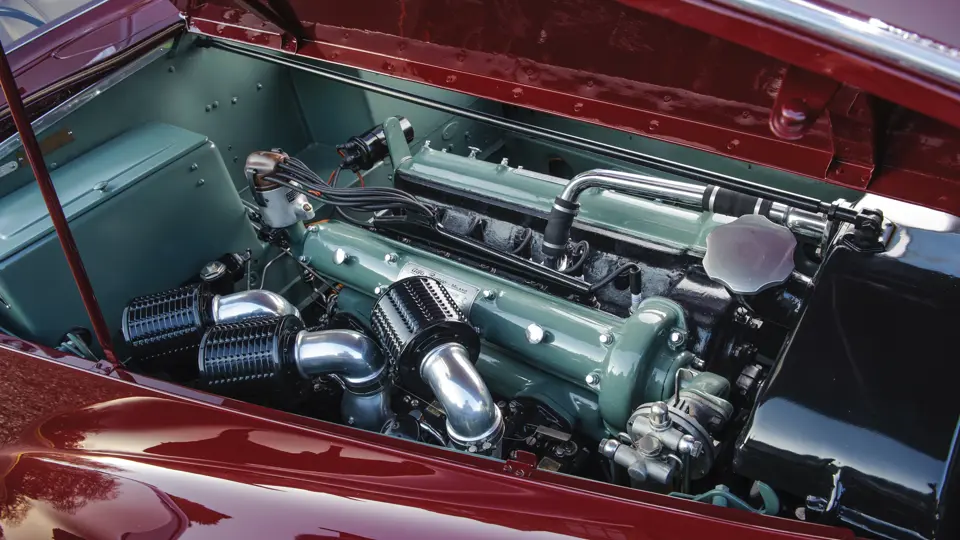


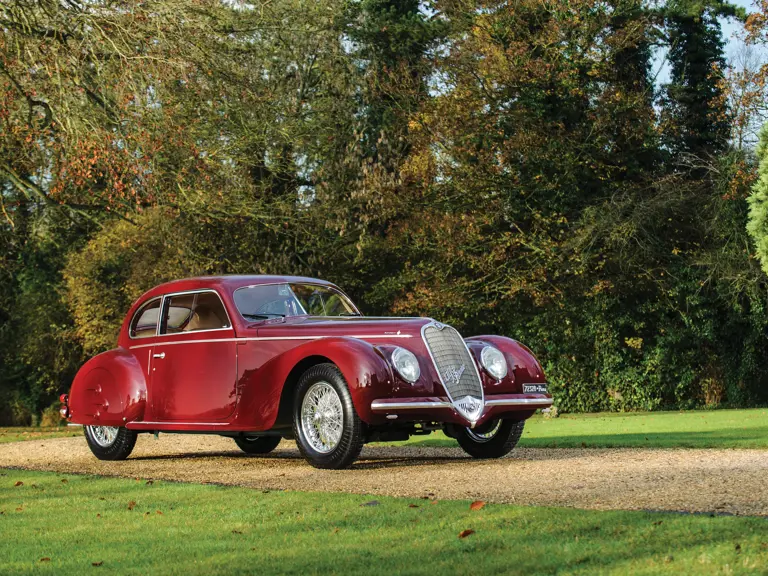
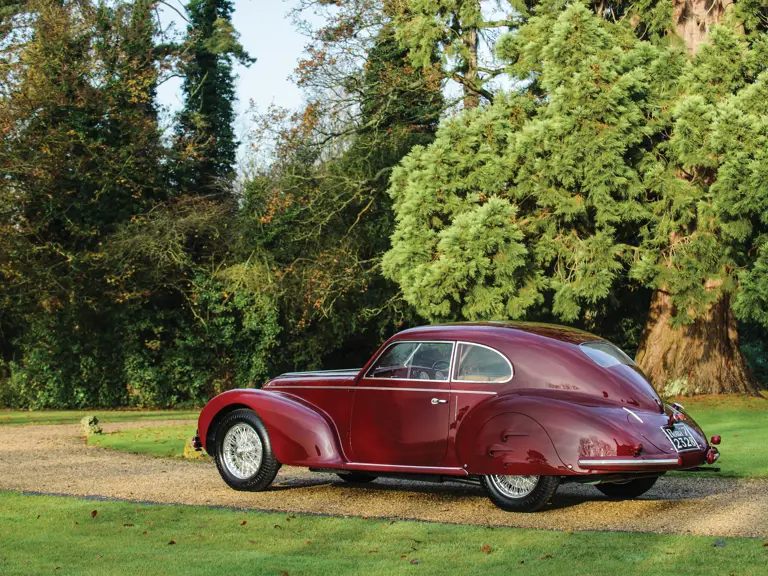
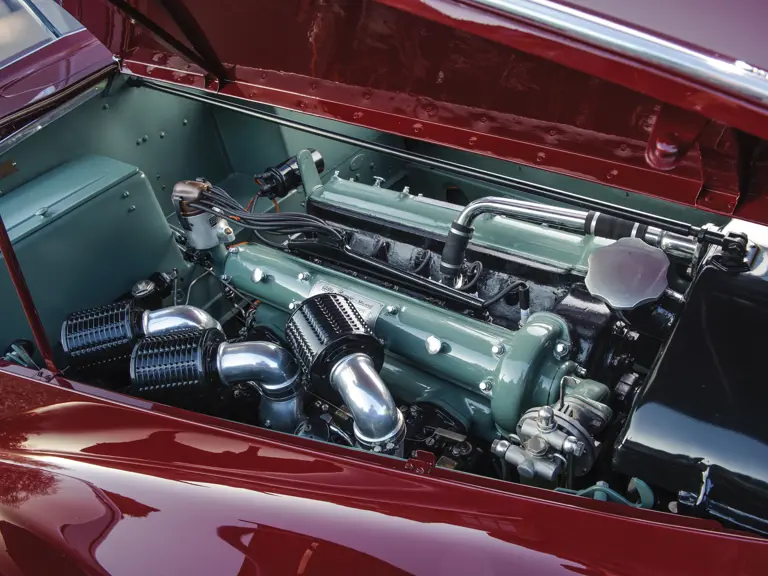
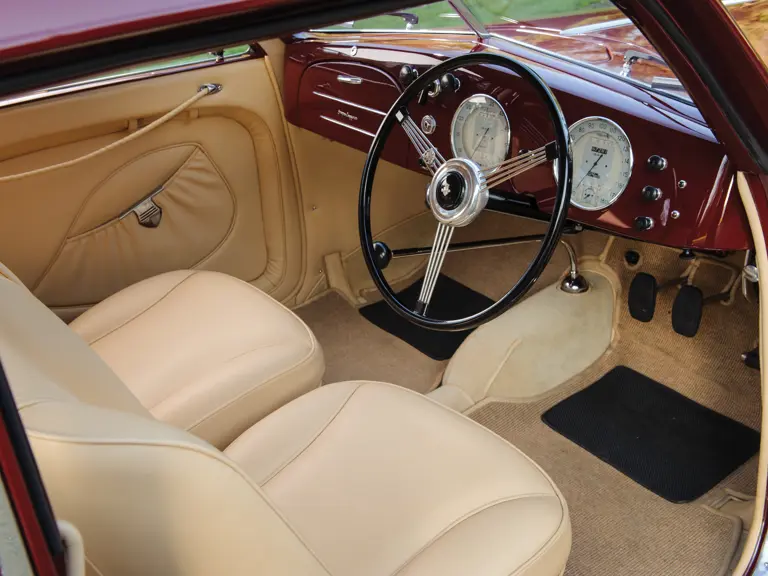
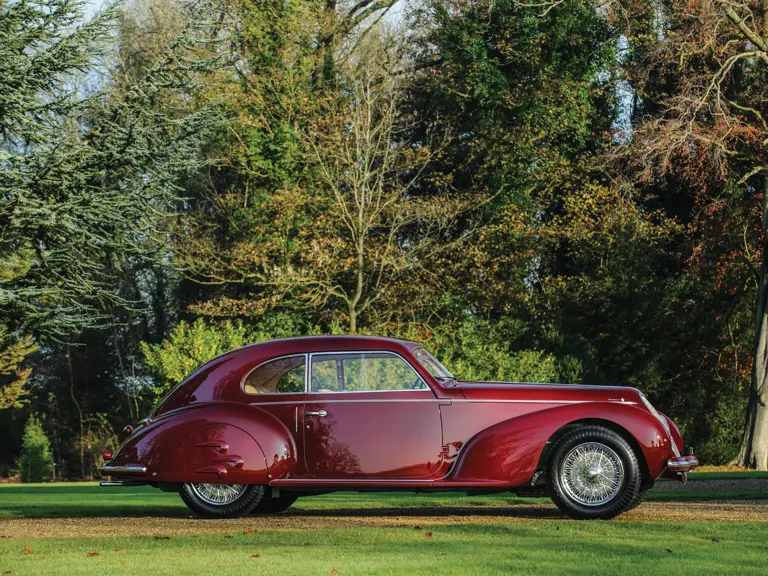
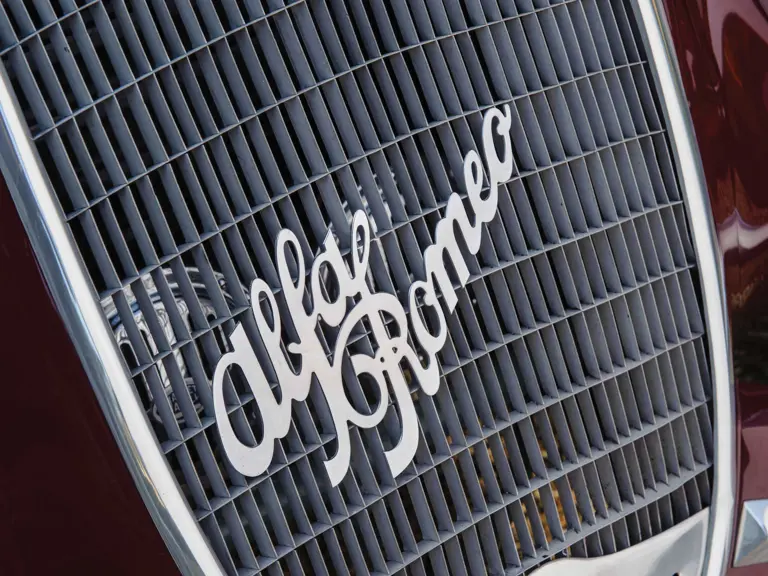

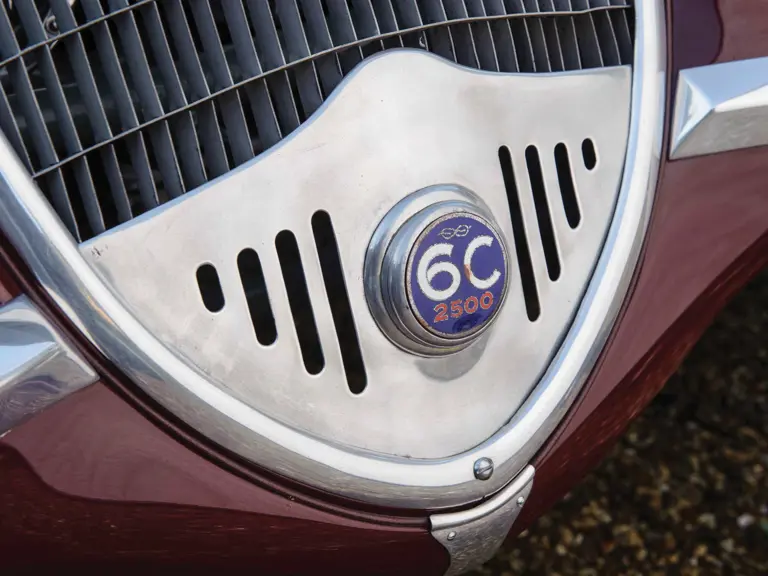
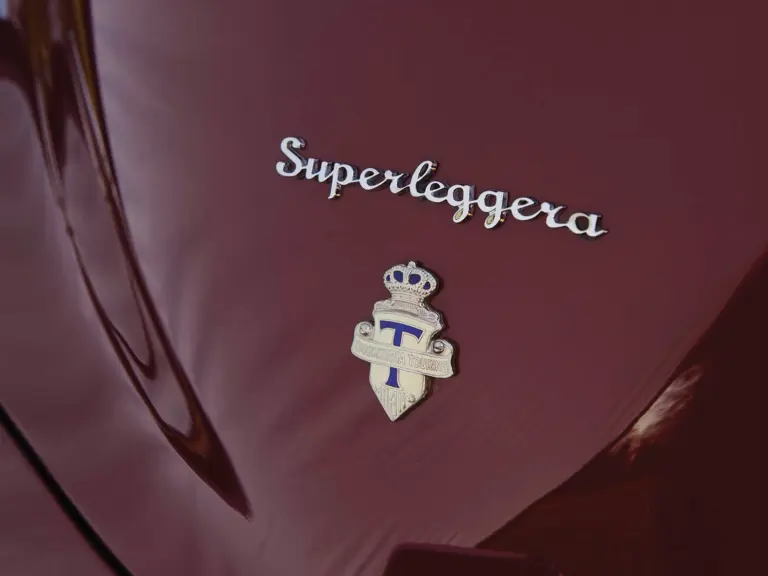
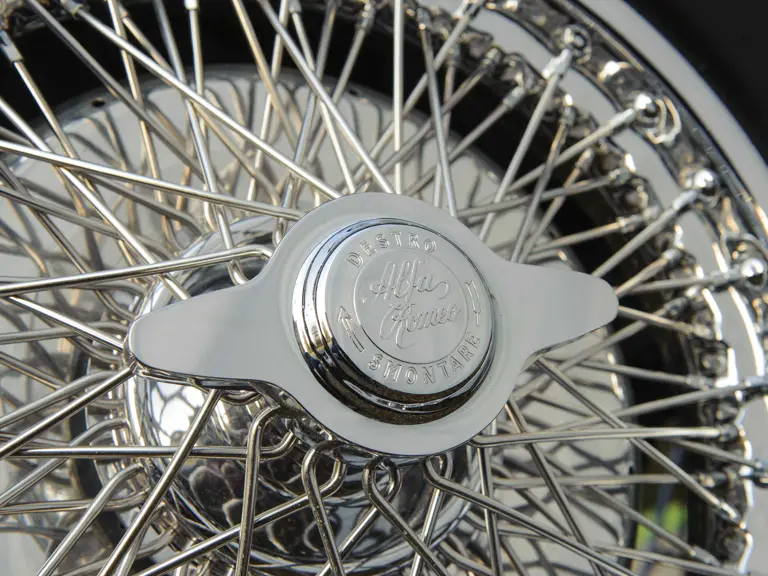
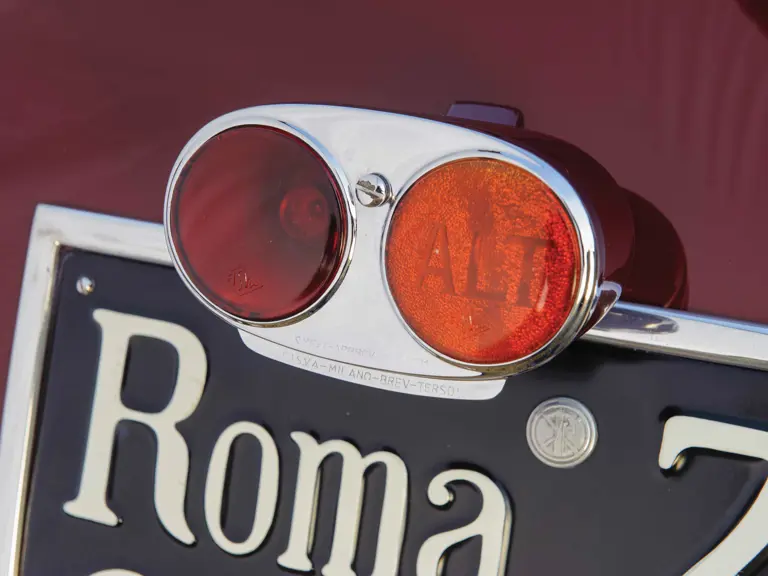
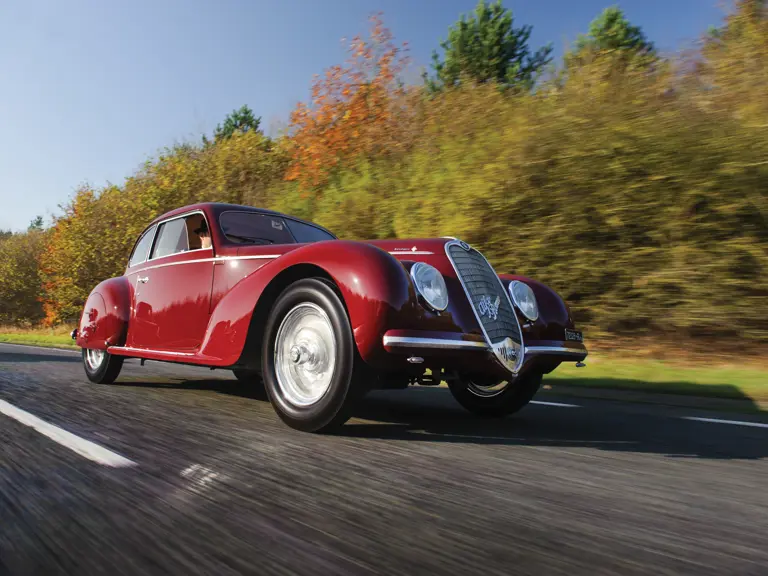

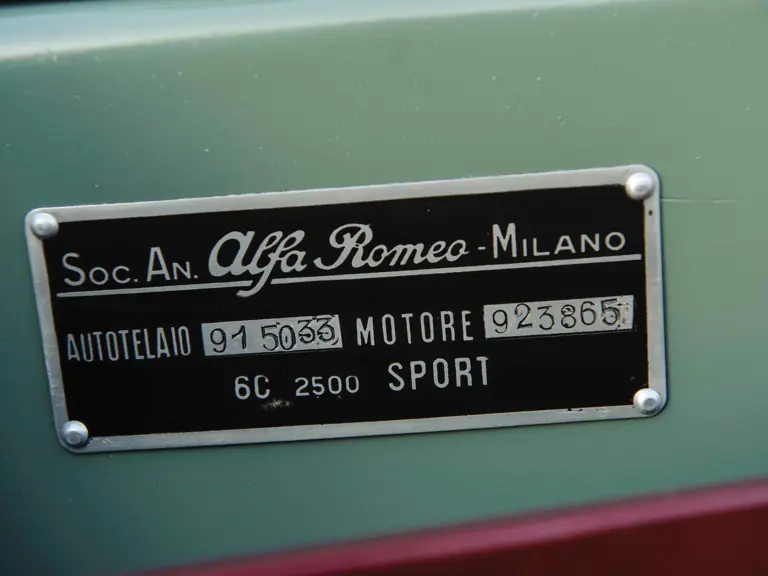
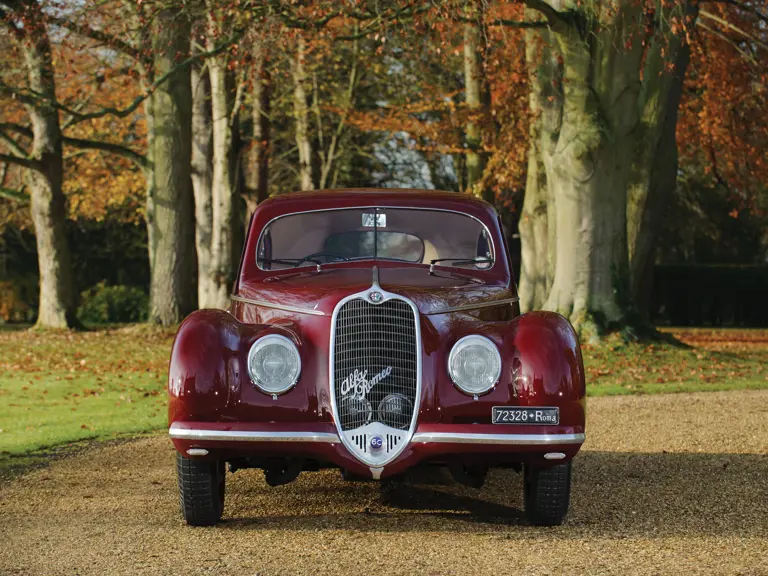
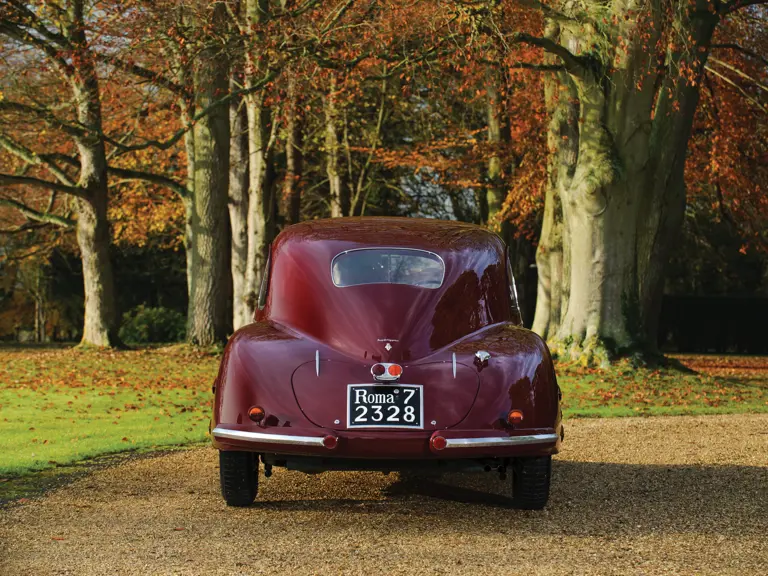
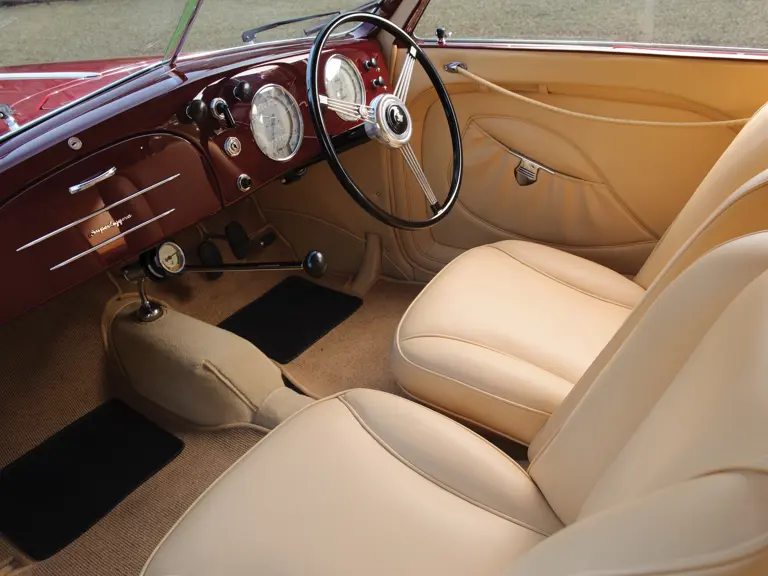
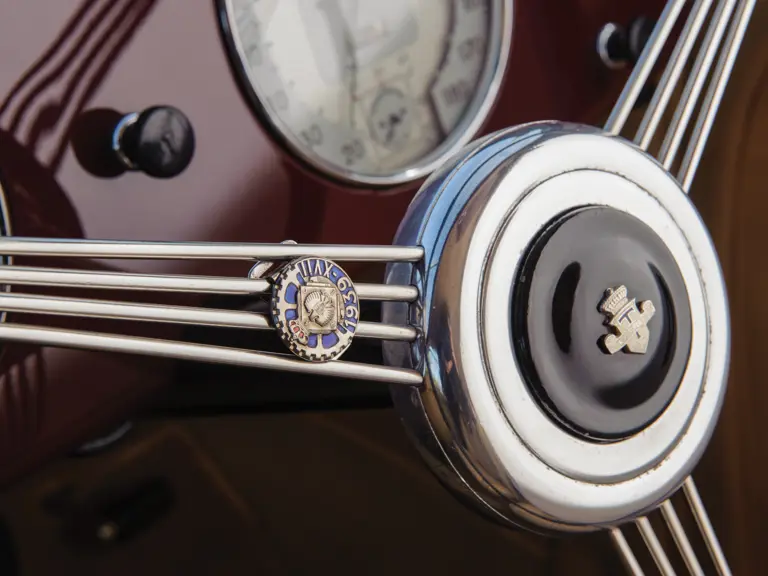

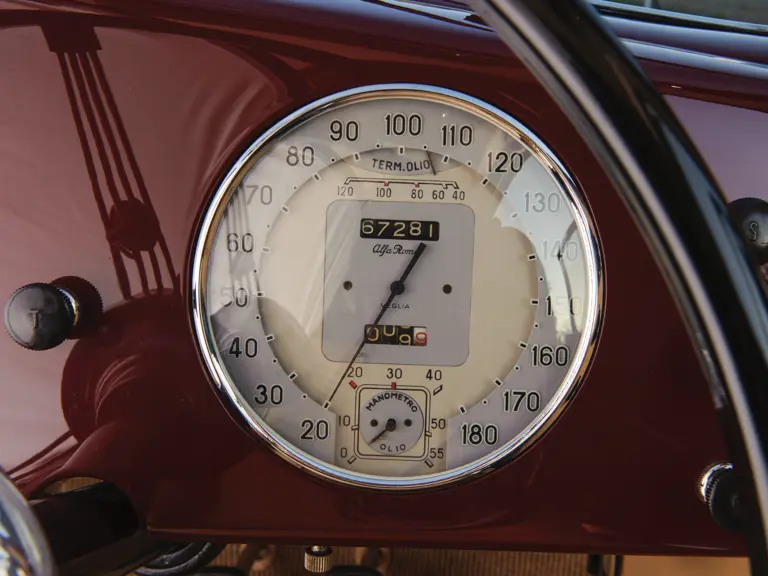
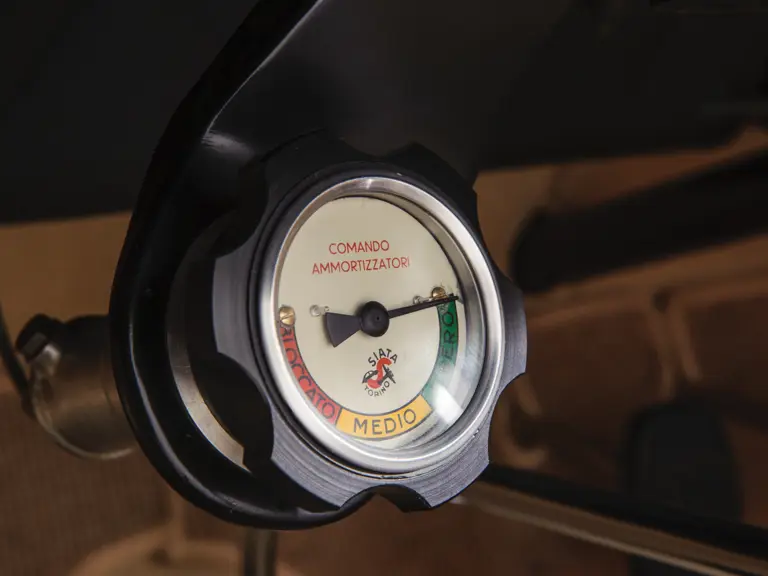
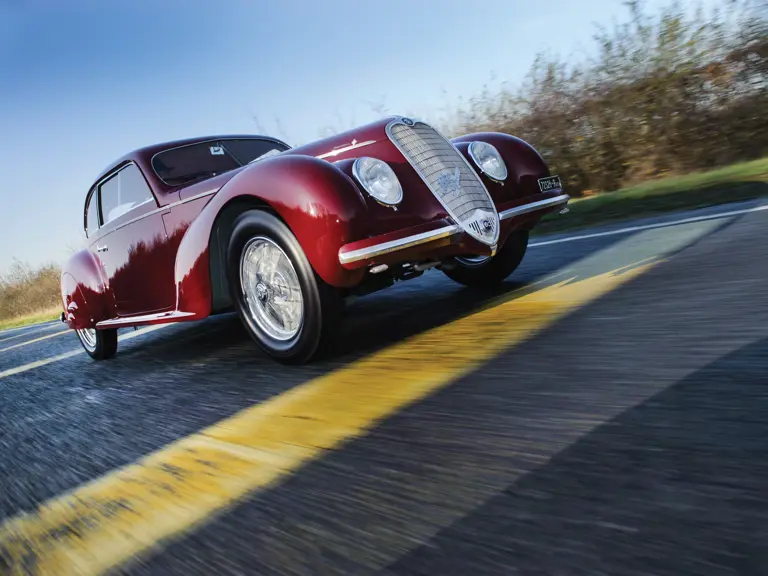
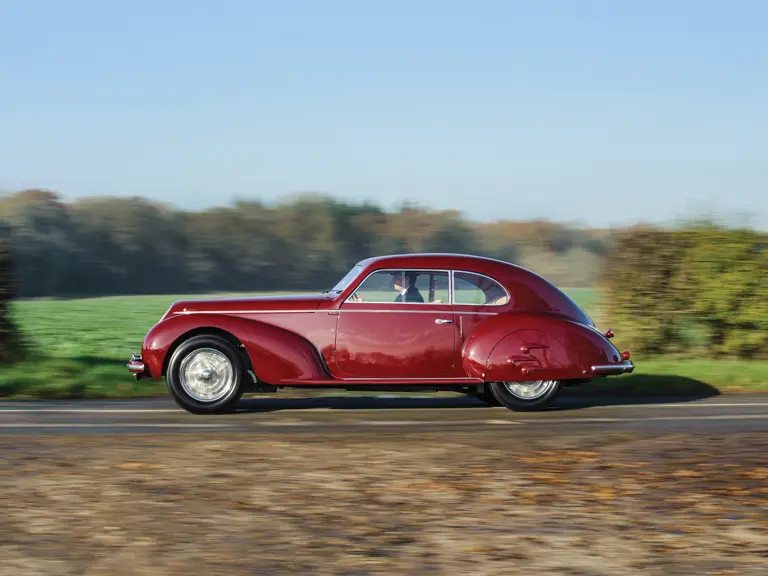
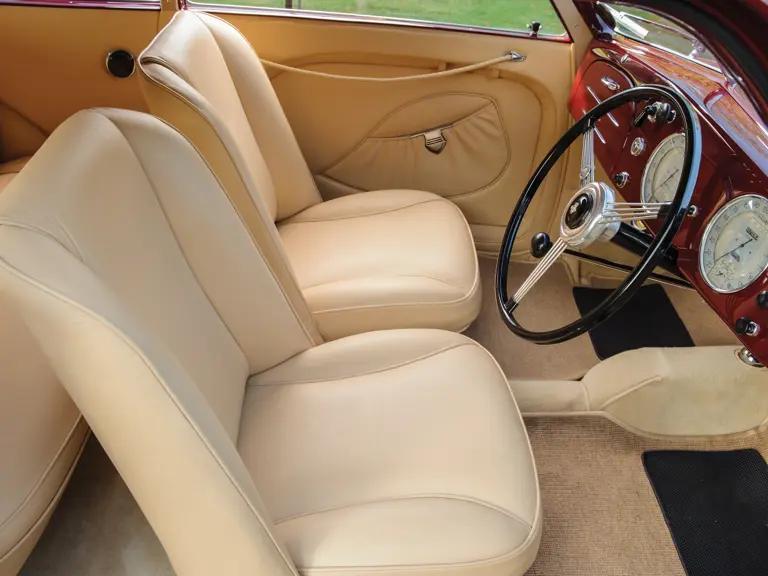
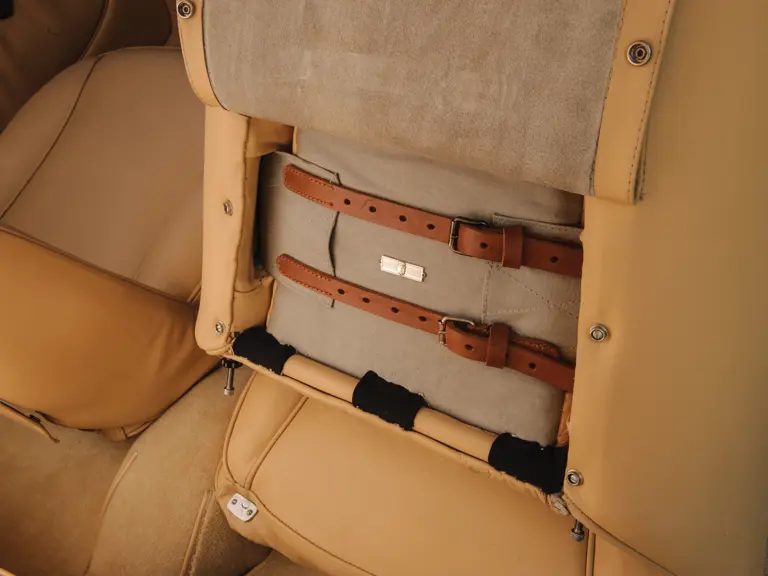
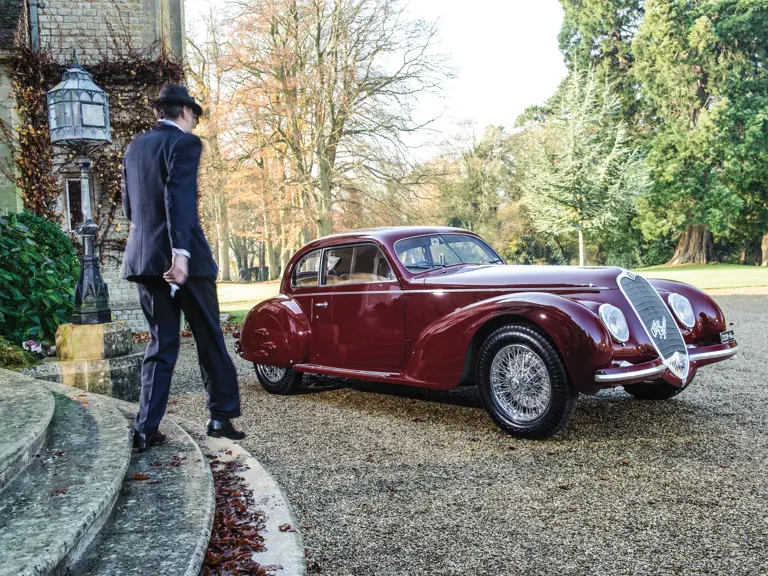
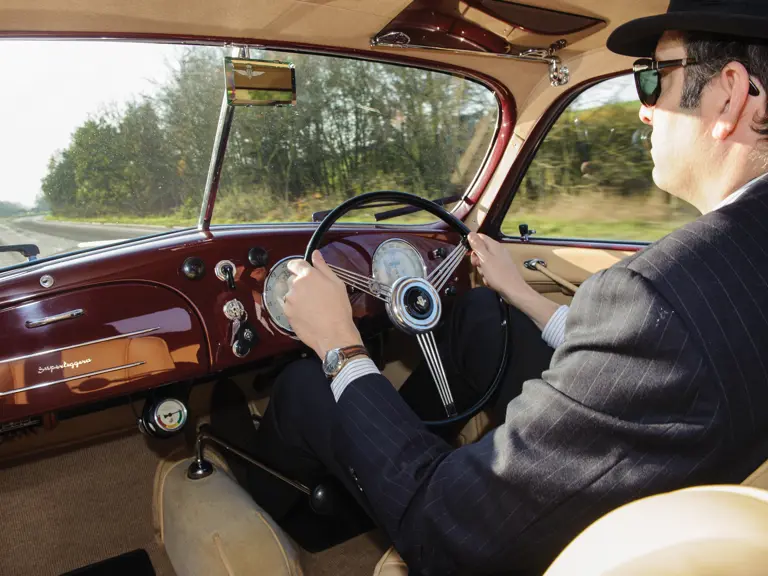
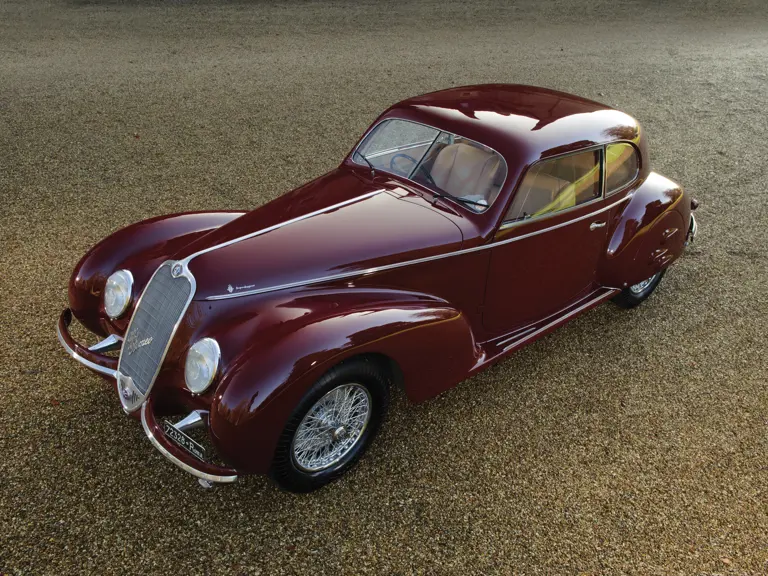
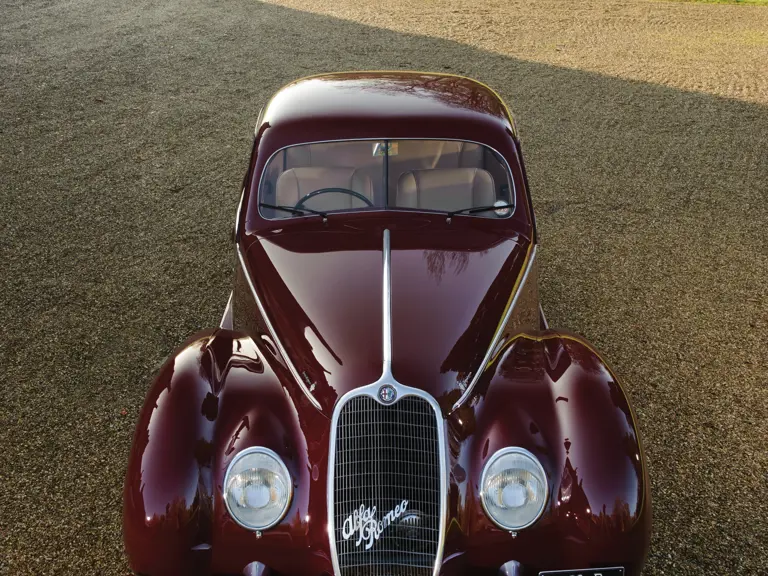

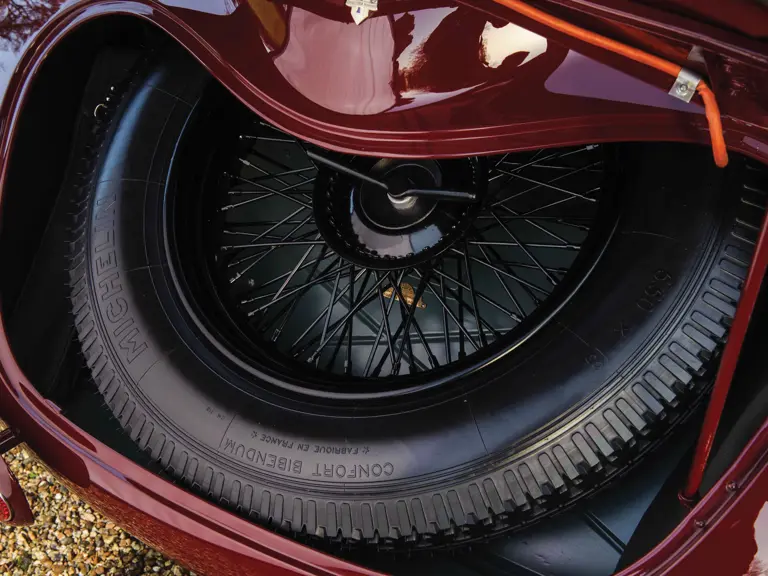
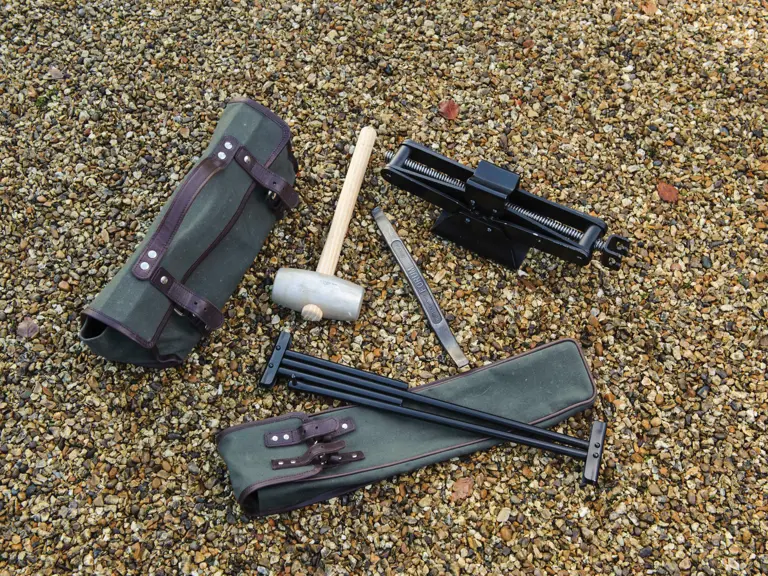
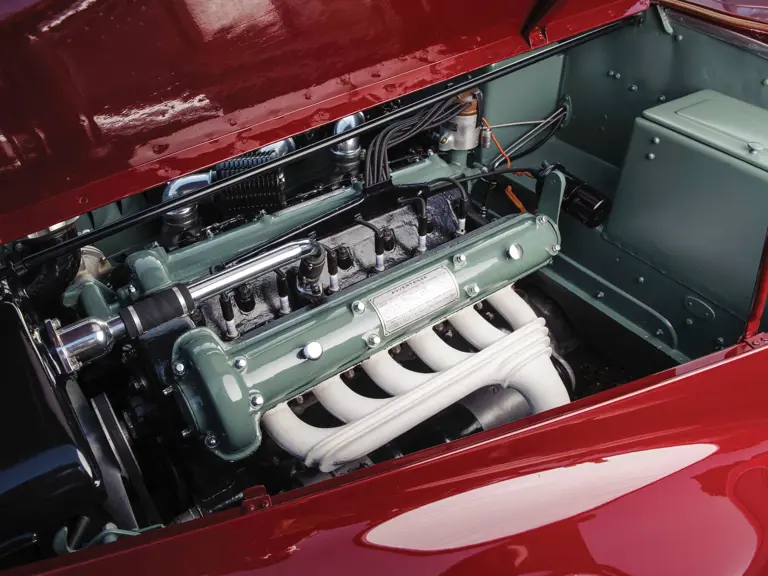
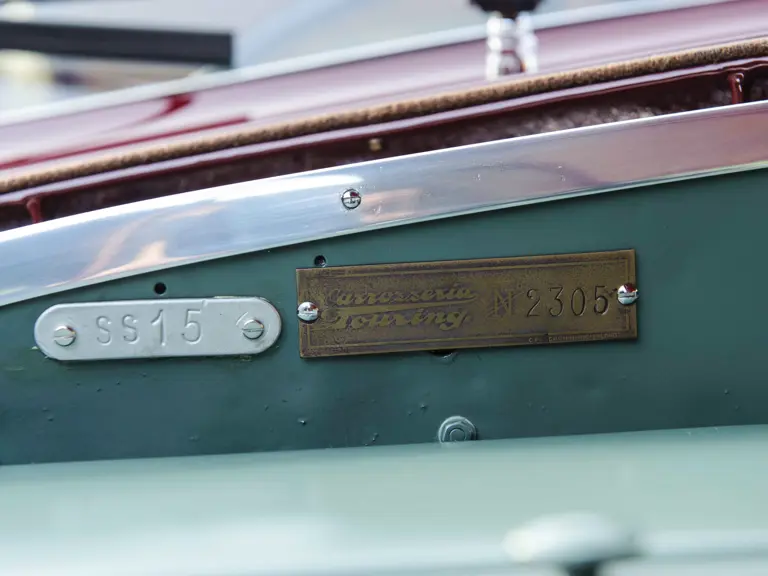
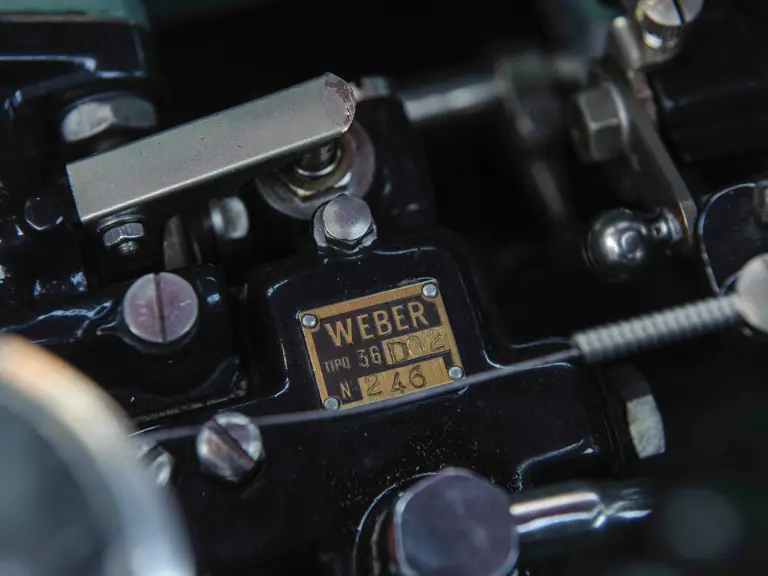


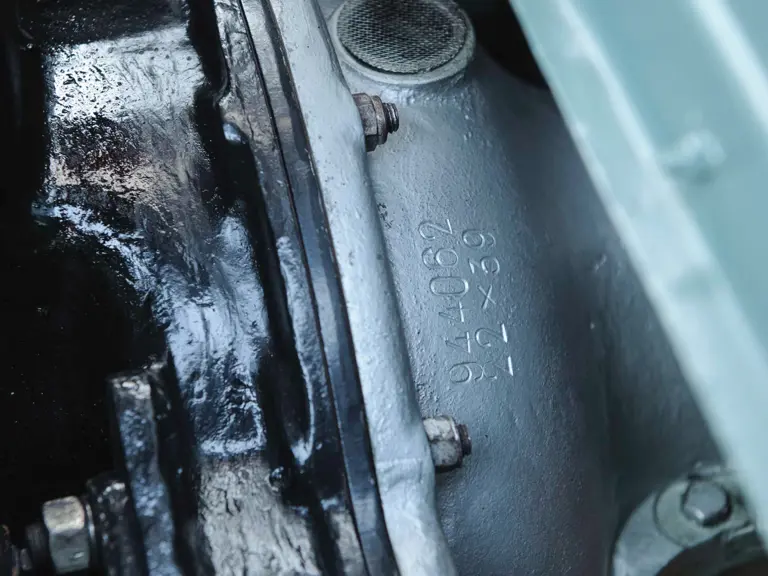
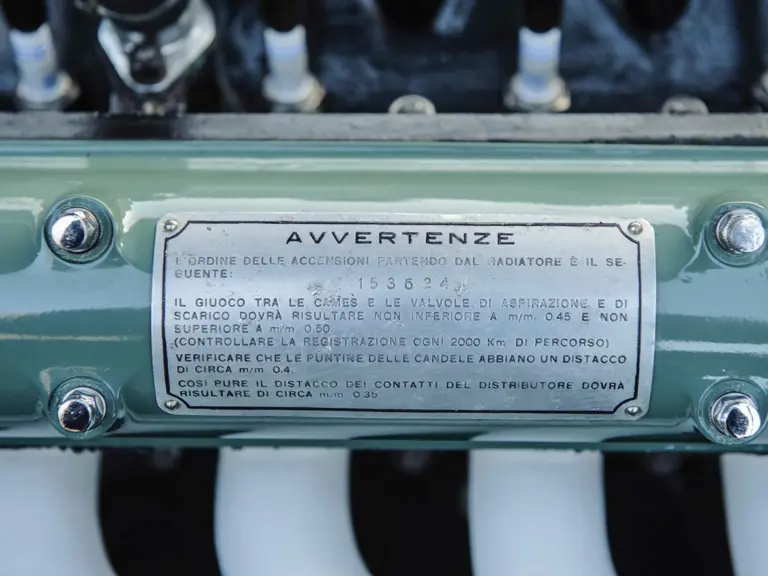
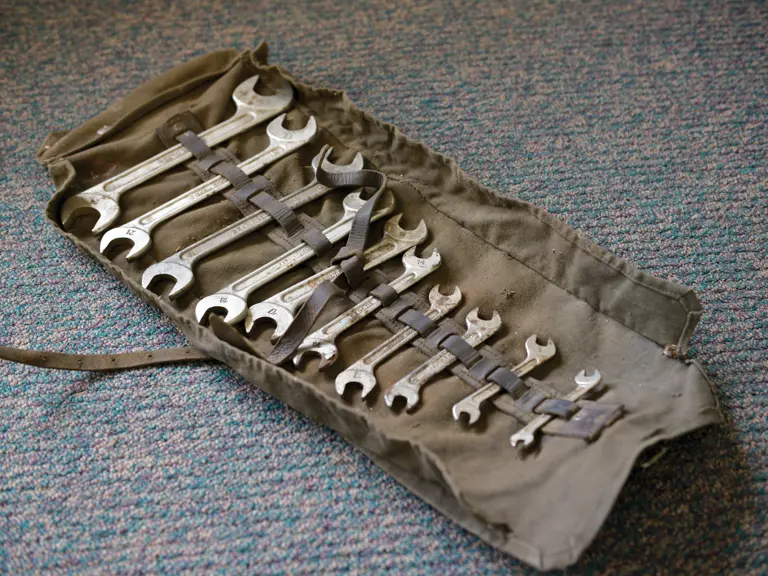
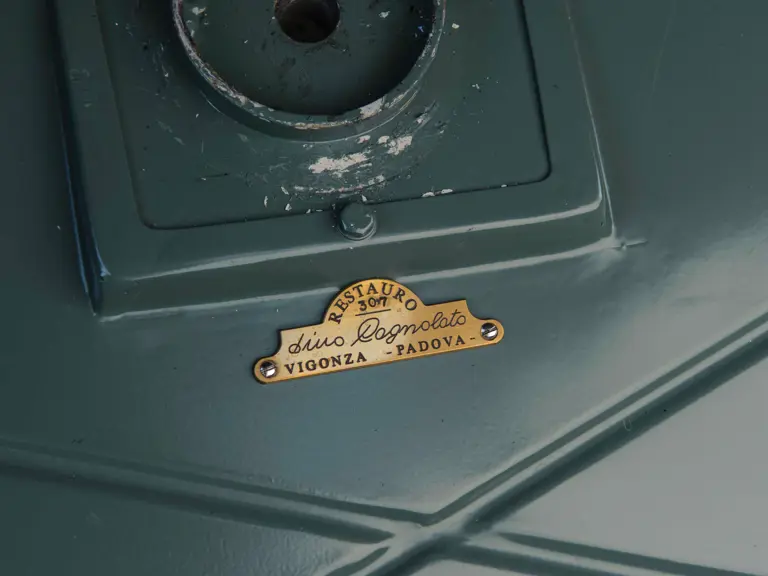
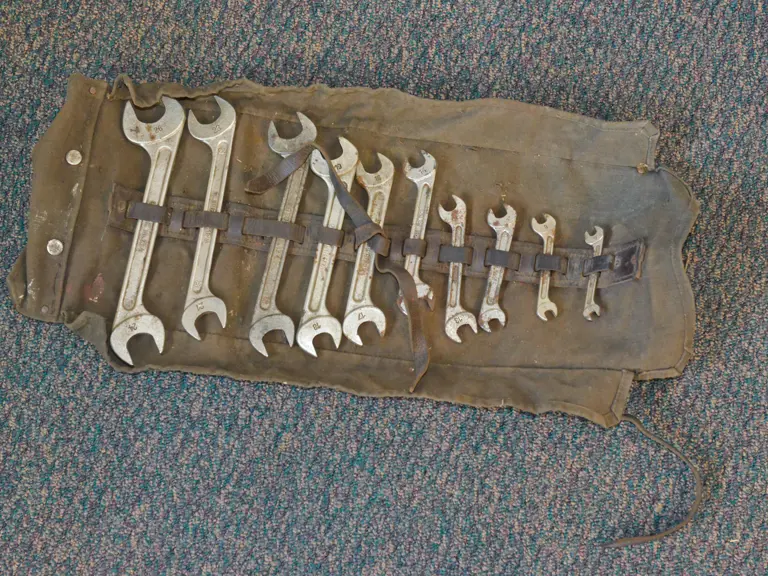
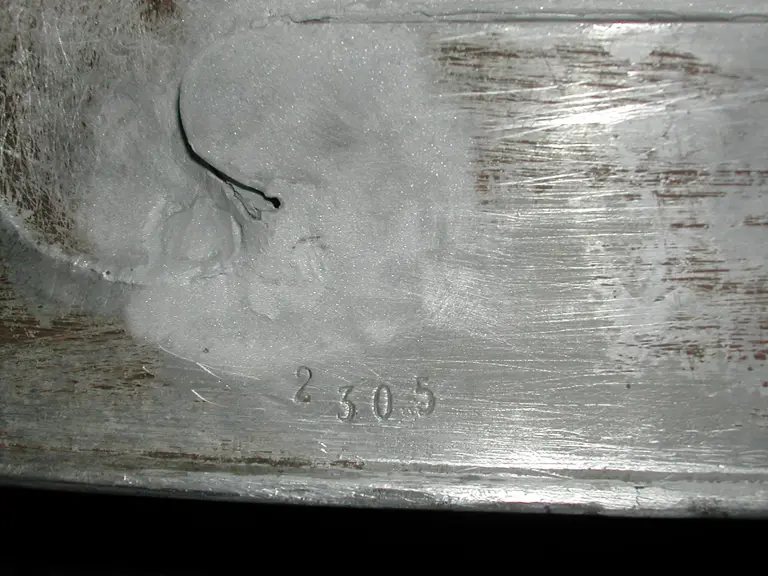
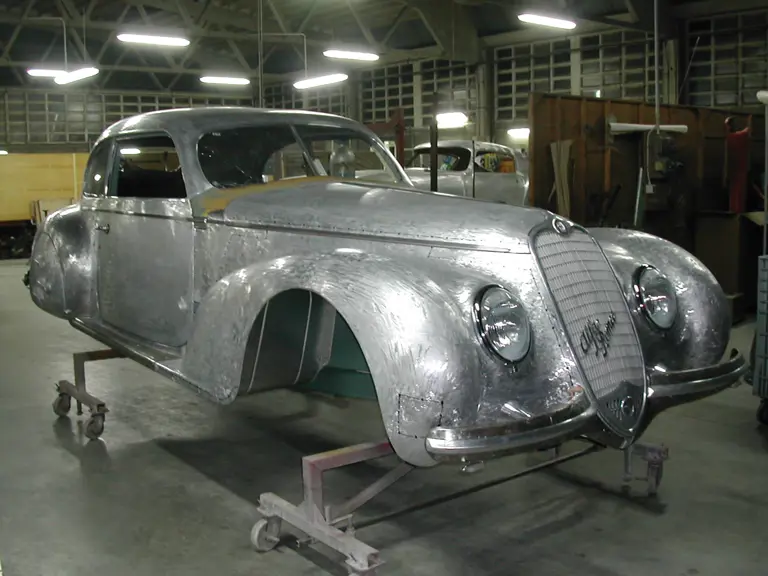
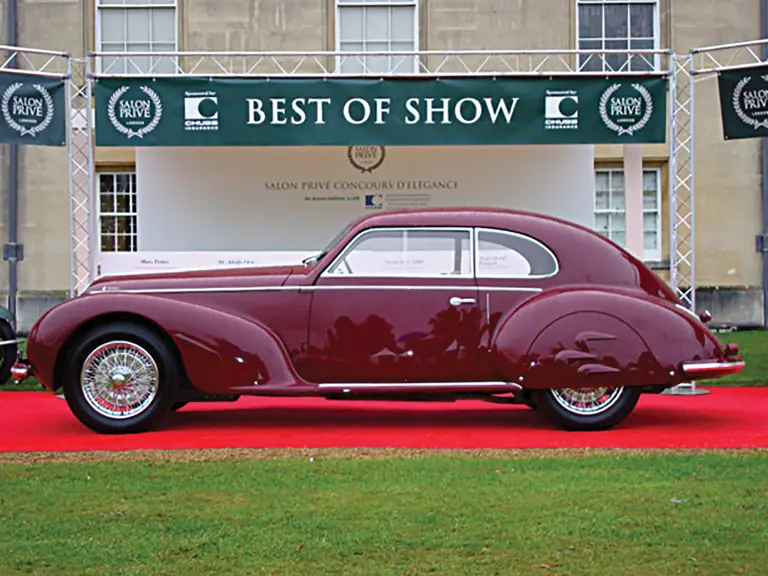
 | Paris, France
| Paris, France
